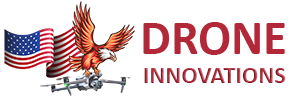The drone community is buzzing with excitement as DJI, the world’s leading drone manufacturer, announces the removal of geofencing restrictions on their drones. This groundbreaking decision marks a significant shift in the company’s approach to airspace management and drone operation.
What is Geofencing?
Geofencing is a technology that restricts drones from flying in certain areas, such as airports, government facilities, and other no-fly zones. DJI’s geofencing system has been a staple feature, designed to promote safety and compliance with local regulations. However, this system has also been a source of frustration for many drone pilots, especially those who fly professionally and find themselves needing to operate in restricted zones with proper authorization.
Why DJI Made the Change
The decision to remove geofencing comes after years of feedback from the drone community. DJI has recognized the growing demand for greater flexibility and autonomy among drone operators. Here are some key reasons behind the change:
- Enhanced Professional Use: Many commercial drone operators work in industries such as construction, filmmaking, and agriculture, where flying in restricted areas is often necessary. Removing geofencing simplifies operations and reduces delays caused by unlocking processes.
- User Autonomy: DJI’s move reflects a growing trust in its users to operate responsibly and comply with local laws without the need for automated restrictions.
- Competitive Pressure: With increasing competition from other drone manufacturers offering less restrictive systems, DJI’s decision helps maintain its position as a market leader.
What Does This Mean for Drone Pilots?
While geofencing is being removed, DJI is not abandoning safety altogether. The company plans to introduce enhanced warning systems to inform pilots of restricted zones without actively preventing flight. Here’s what you can expect:
- Improved Airspace Awareness: DJI drones will still provide real-time alerts about no-fly zones, giving operators the information needed to make safe decisions.
- Increased Responsibility: Pilots will need to be more vigilant in understanding and adhering to local airspace regulations. The burden of compliance now lies more heavily on the user.
- Simplified Workflow: Commercial operators will no longer need to navigate the sometimes cumbersome process of unlocking geofenced areas, saving time and effort.
Industry Reaction
The response from the drone community has been overwhelmingly positive. Professional pilots have praised DJI for listening to their concerns and taking steps to improve user experience. However, some safety advocates have raised concerns about potential misuse, emphasizing the importance of pilot education and enforcement of existing laws.
A Step Forward for the Drone Industry
DJI’s decision to remove geofencing represents a significant milestone for the drone industry. By empowering users with greater freedom and flexibility, the company is fostering innovation and growth across various sectors. At the same time, it’s a reminder that with greater freedom comes greater responsibility.
Final Thoughts
As DJI leads the charge in reshaping how drones interact with airspace, the ball is now in the court of drone operators to use this newfound freedom responsibly. Whether you’re a hobbyist or a professional, staying informed about airspace regulations and prioritizing safety will be more important than ever.
Stay tuned for more updates on this developing story and how it impacts the future of drone technology!
John Delaney FAA part 107 licensed drone pilot

